High arches (also called as pes cavus or cavus foot) is a condition in which the foot has an arch which is very pronounced and away from the ground. Because of this structure of the foot, an excessive amount of weight is placed on the ball and heel of the foot when walking or standing.
Most cases of high arches run in families. Sometimes, one may develop a high arch due to nerve damage due to injuries or nerve disorders, in which case it is imperative to seek medical consultation.
Many people with cavus feet have no problem at all. Sometimes it can be difficult to find shoes to fit, or the feet may ache, especially around the ankle, the outer edge of the foot or in the ball of the foot. Curled-up toes may rub on shoes.
Since the arches are higher than ideal, an individual with high arches can suffer from arch pain too. It will seem to them that the entire foot is having severe pain after being on their feet for a little time.
High arches might also cause over supination (having the foot roll outwards towards the ankle joint while walking). Supination prevents the foot from absorbing shock while in motion. It also causes most of the body weight to land on the outer edges of the feet. Excessive supination in a high arched foot can cause frequent inversion ankle sprains and heel spurs. Supination can also cause:
Podiapro’s custom insoles are ideal for high arches since they provide the right kind of support with correction for supination or pronation as the case may be. This will take away the excessive pressure from under the heels and the balls of the feet and load the arch with it.

C 1, Gate No. 2, Shreyas Industrial Estate
Off Western Express Highway
Goregaon East
Mumbai, India